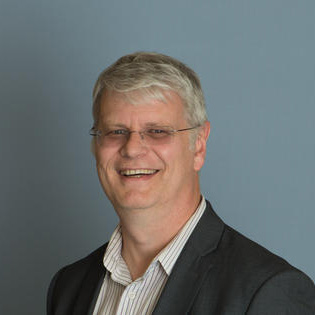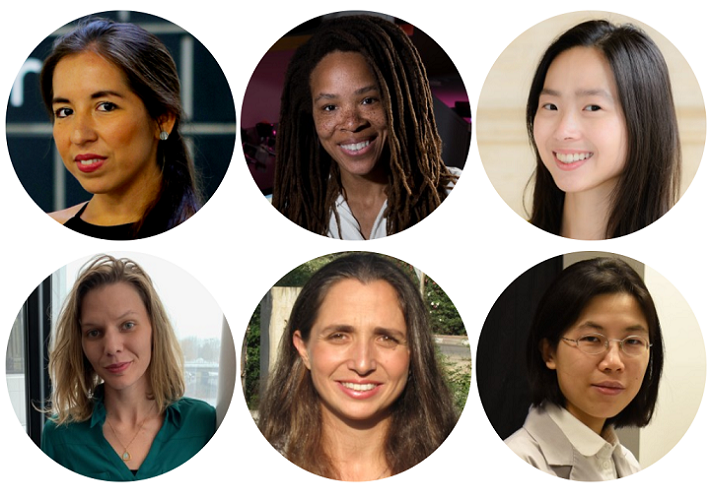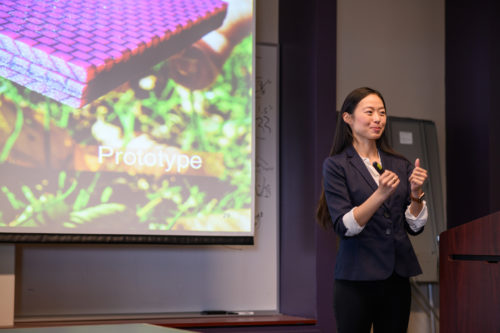I’ve been reading Ian Gibson‘s papers for years now. He has written many insightful articles delving deep into metal, polymers, sintering, concrete, welding, medical applications and the industrialization of 3D printing. This 2016 paper on Design for Additive Manufacturing is one of the most useful things you can find online for 3D printing, while this concrete 3D printing article is a great primer on that part of our industry. He is also one of the authors of the influential book Additive Manufacturing Technologies which has helped many students worldwide to understand 3D printing. Ian has a clear mind and a wealth of 3D printing knowledge and experience. To my surprise, he was now a Professor at the University of Twente. He moved to the Netherlands to be the scientific director of the Fraunhofer Project Centre in complex systems engineering. This arm of the huge German Fraunhofer siblings aims to bring a deep understanding of 3D printing and related developments to the Netherlands. The Center hopes to partner with business in order to make 3D printing for manufacturing a reality. Snagging Gibson is a real coup for both the University and Fraunhofer and it bodes well for their attempts to make manufacturing with 3D printing more commonplace.

First off, why Twente?
I originally turned down the opportunity. It’s hard to move away from somewhere like Australia, even though it is very isolated from the rest of the world. My mind was changed for two primary reasons. First is the Fraunhofer. The opportunity to be involved with such a well-know and respected organisation is a huge attraction. The second is the culture of the University of Twente. There is a huge amount of respect for education and research that many other universities have turned (in my opinion) away from and into too much of a business. I, therefore, feel very much at home, even with the huge challenges before me, including learning Dutch by the way.
How do you teach the next generation of students about AM?
These days, good educators have changed from knowledgable lecturers to experienced facilitators. Following on from the previous question, I have been an early adopter and heavily involved in project-based learning. This is a refinement of problem-based learning that allows a teaching programme to link fundamental learning requirements to the problem space within projects. In the past this was difficult to do because of the time required to develop the skills in manufacturing as well as the planning and fabrication overheads. AM directly addresses this issue, particularly in the ideation and design iteration phases of product development. The best way to teach students is through immersion. I see my job as not to teach them how to use these machines but to guide them through the design processes with the benefit of my experience and knowledge of what others have done and are doing around the world.Of course, this applies best to entry level AM technologies. For the higher level concepts and technologies, my approach is to harness the enthusiasm from students who express a desire to learn more by hooking them into specific industry and research driven projects.

Will 3D Printing be a revolution in all manufacturing, or only in some areas?
I am not a fan of the word ‘revolution’. I much prefer to use the word ‘evolution’ and we can see that AM has made its way through time gradually improving to a point where it is suitable for manufacture in more and more instances. In my presentation slides, I often like to make a veiled reference to the Star Trek replicator, which is the ultimate AM in my view, capable of creating anything by assembling at a molecular level. My view is that if we ever get to that stage then it will be “3D printing Jim, but not as we know it”. Having said that, everything is improving in AM, speed, accuracy, material properties, cost. If we see the variation of Moore’s law for AM technology, then we may see AM pervasive in all manufacturing. However, I wouldn’t hold my breath, it will take time and many more developments.
How can we do proper QA for 3D printing?
Making the systems more intelligent would be a start. If we can interrogate the systems during build more effectively then I can see QA being a lot easier. The other consideration is to ensure that simulation tools are able to more accurately determine the final part properties. If we can do that, then we should be able to carry out relatively simple in-build tests to verify the predictions.

“Parts made by Robert Leen, a student and technical assistant in my team at Deakin University. A very talented designer and AM practitioner”
How do we eliminate labor in 3D printing?
This is the evolutionary process I was referring to earlier. Small changes that make supports easier to remove, finishing methods, more accurate AM machines, etc. They will all move towards reducing labour requirements (amongst other things) that will gradually make them more efficient.
What will the Fraunhofer Project Centre at the University do?
First off, we are not just promoting AM. There are a number of pillars of activity in the FPC, many of which are related to AM as a tool that must therefore be compared against other tools. Our purpose at FPC is to assist manufacturing industry in elevating their capacity. When there are so many options available to you, it is helpful to have an entitiy like the FPC to help you navigate this labyrinth. We also see ourselves as a conduit to much of the excellent research that is being carried out at the University of Twente. Basically I would say that if you’re a company looking to invest in new technology that in some way will change your products and/or processes, consider coming to see us as a potential partner.
Who would you like to partner with?
We are looking to work with forward-thinking manufacturing companies, independent of size or background. Some of that may involve linking some of the larger companies to SMEs. Our objective is to create an environment for innovation and collaboration where we can all help and learn from each other.
What is holding AM back in medical?
The easy answer to this is related to legislation and certification. AM is most well-suited to customised or patient-specific applications. This means that many AM products are unique. Medical approvals for devices are primarily based on population studies, ensuring that a generic design can work for many people. AM turns this the opposite way round where an individual design is for one person. How can the current system therefore ensure every example is going to succeed? I understand the problem but very unsure on how to arrive at a solution. I think it should be that processes are validated, rather than products, but that is easier to say than to do.
Do you believe in more patient-specific devices?
Yes I do. In many circumstances. This is not just about AM, but about personalised medicine, which is part of the Healthcare 5.0 initiative. A health tracking watch or similar device, which can learn your habits and alert to potential or even actual health problems, is a patient-specific device in that the software is customising itself to the individual user. AM just helps with the ergonomics and aesthetics. We are already a long way down this road but still with a long way to go. I think one area where development is likely to take off is the merging of mechanical AM with electrical and electronics to create intelligent, custom devices. Patient-specific devices will definitely benefit from this.
What are steps that need to occur to get multimaterial metals further?
This is a really tough thing to do because the metallurgy (most specifically intermetallics) very often gets in the way. We are still in fact struggling to understand some of the fundamentals like fracture behavior when you move from material A to material B. There are a few successes that come from research into cladding, but these are quite simple problems compared with what we would like to do.

Turbine housing build by Aeronamic with the help of Fraunhofer Project Centre
What advice would you give to a company wanting to industrialize 3D printing?
I would advise them to come and see the FPC of course. Having a partner who can help guide you through the process is very important. However, the first thing is to get your hands dirty by investing in some low-cost AM equipment. This will kick-start the creative processes. I once was approached by a company who was looking to make some plastic covers for equipment that they were using on their production line. The supplier charged them 50 Euros for each new part and they, correctly, thought it would be cheaper and easier to make them themselves. They asked me to make these covers for them, which I did but I also suggested they invest in an entry-level printer, which they did. Now they are saving thousands of Euros by printing spare parts for their line with a machine that cost 400 Euros and is operated by their current maintenance crew.
Who should read your book?
Well according to the publisher Springer, over 1 million people already have, which is nice to know. We wrote the book at the time because we all thought there was nothing out there for students looking to understand AM. I think we were right and it has become part of the exciting growth that we are seeing in the industry. It was really aimed at bachelor and masters students working either on related courses or projects but we also see that people in industry are reading it too.
What does the 3D printing industry need to improve?
I think that the industry has moved so fast that there is probably something missing in the infrastructure. Organisations, associations, regulatory bodies, etc. are struggling to keep up. I saw a presentation recently titled “the exciting and boring future for AM” or something similar. I guess we are in a phase where we need to be a bit boring as a further response to your earlier question about quality. On a more specific note, most 3D printers are not really designed for true industrial use. They are still primarily constructed as lab equipment. We need to get over that.
There are more post-processing vendors providing equipment but on the whole, the process seems rather artisanal?
Agreed, but you have to see how far we have gone since pre-rapid prototyping. It’s kind of related to the product I think. Look at the Figureprints setup. There’s a video of their process which is very nicely done that requires manual input at key stages because all the models they work with are somewhat unique. However, it is still quite automoated. Contrast that with how GE probably deal with the fuel nozzles on their Leap engine. Although I’ve not seen it, I can well imagine there is very little manual intervention on the design, because all the parts are essentially identical. It’s just best to use AM to achieve their performance objectives.
There is a lot of hype on concrete printing but most companies seem to engage in overclaim. What are the challenges in printing houses?
The challenge is really about providing something that cannot be done in an alternative manner. Concrete construction is all about providing structural support in a quick, low-cost manner. There are all sorts of methods for creating pre-cast and modular concrete products. How does concrete printing match up to that? The answer is, not very well. To me, there are lots of potential ways in which AM can assist the construction industry, but it has to be looked at from first principles and in a holistic manner. For example, I think there is a lot that can be done with AM in the field of modular construction, but a lot of it isn’t concrete. If it is concrete then let it be in partial construction for the complex structures like joints, facades, decorative features, etc, which then match up with the blockwork made using standard methods.
“Through this Award and other programs, Johnson & Johnson is working to increase the participation of women in STEM2D fields worldwide. We want to nourish the development of women leaders building a larger pool of highly-trained, female researchers so that they can lead STEM2D breakthroughs in the future,” said Cat Oyler, Vice President, Global Public Health, Tuberculosis, Johnson & Johnson and WiSTEM2D University Sponsor.








